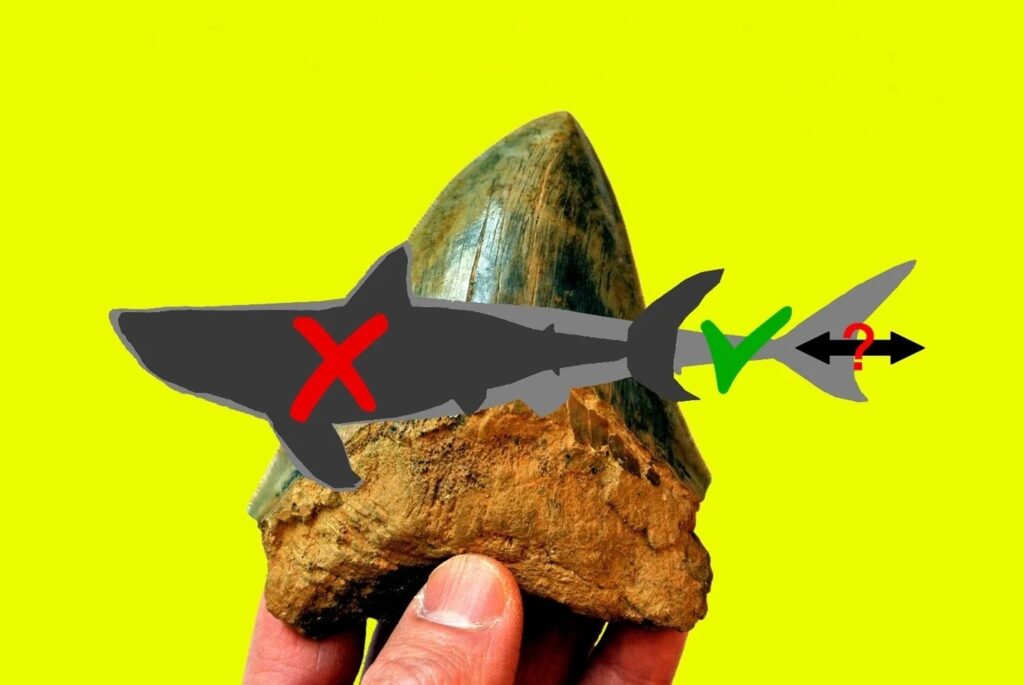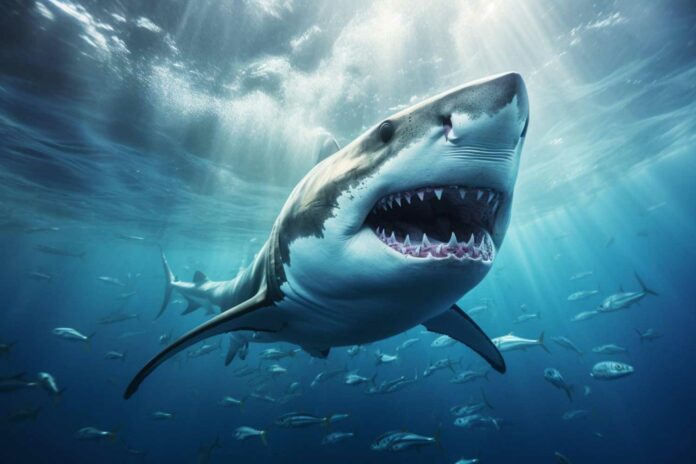The megatooth shark, scientifically known as Otodus megalodon, is an extinct shark species recognized mainly by its enormous teeth in fossil records from the Neogene era. This shark is thought to have grown to at least 15 meters in total length, making it one of the largest marine carnivores in history.
Studying Megalodon’s biology, evolution, and extinction is crucial because it plays a significant role in shaping the ecology and evolution of marine ecosystems, ultimately influencing today’s oceans.
Despite its importance, attempts to understand the body structure of †O. Megalodon has been speculative because no complete skeleton of this shark has been found. This makes it challenging to infer its physical characteristics and behaviors accurately.
A recent study challenges previous assumptions about the Megalodon, a massive shark that became extinct around 3.6 million years ago. Contrary to earlier beliefs, the findings suggest that the Megalodon was more slender than previously thought. This discovery has significant implications for scientists’ understanding of Megalodon behavior, ancient ocean life, and the reasons behind the extinction of these sharks.

The Megalodon, often depicted as a gigantic monster in popular culture, was previously estimated to have reached lengths of at least 50 feet and possibly up to 65 feet. However, the knowledge about the Megalodon is primarily based on its teeth and vertebrae found in the fossil record, providing a limited dataset for conclusions.
Earlier studies used the modern great white shark as a model to infer Megalodon body structure, leading to the assumption that the Megalodon had a round and stocky build similar to great whites. The new study challenges this model, suggesting a more slender body shape for the Megalodon, providing a fresh perspective on these ancient marine predators.
UCR biologist and paper’s first author Phillip Sternes said, “Our team reexamined the fossil record and discovered the Megalodon was more slender and possibly even longer than we thought. Therefore, a better model might be the modern mako shark. It still would have been a formidable predator at the top of the ancient marine food chain, but it would have behaved differently based on this new understanding of its body.”
In a recent study, a team of 26 scientists from various parts of the world, co-led by researchers Sternes and Kenshu Shimada, a paleobiology professor at DePaul University, drew inspiration from differences in previously estimated body lengths of the Megalodon.
The researchers experienced a “eureka moment” when they identified a discrepancy between two earlier estimates for the length of the same Megalodon specimen. To address this, the team conducted a new comparison, focusing on Megalodon vertebra fossils and comparing them to those of modern lamniform shark relatives.
The researchers utilized a CT scanner to measure the entire vertebral skeleton of a living great white shark, enabling a more accurate comparison with the previously reconstructed Megalodon vertebral column. This approach allowed them to reassess the body shape and size of the Megalodon with a fresh perspective.
Sternes said, “It was still a giant, predatory shark. But the results strongly suggest that the Megalodon was not merely a larger version of the modern great white shark.”
The revised understanding of the Megalodon’s body type doesn’t just change our perception of the giant shark; it has broader implications for scientists’ understanding of its impact on marine ecosystems and the evolution of present-day oceans.
While the Megalodon is undoubtedly one of the largest marine predators in history, the discovery of a slimmer and more elongated body shape implies that it also had a longer digestive canal. According to Sternes, this finding suggests that Megalodons may have experienced enhanced nutrient absorption, requiring them to eat less frequently than previously believed.
Sternes said, “With increased ability to digest its food, it could have gone longer without needing to hunt. This means less predation pressure on other marine creatures. If I only have to eat one whale every so often, whale populations would remain more stable over time.”
While some shark scientists have previously theorized that a decline in prey availability contributed to the extinction of Megalodons, Sternes proposes a different perspective, supported in part by the updated understanding of the Megalodon’s body shape.
Sternes suggests that a combination of factors, including the emergence of the great white shark, might have played a role in the Megalodon’s extinction. The revised understanding of Megalodon’s body shape implies that it may not have been as agile as the great white shark, potentially making the latter a more effective predator. This increased competition for food resources could have been a significant factor contributing to the demise of the Megalodon.
Journal Reference:
- Phillip C. Sternes, Patrick L. Jambura, Julia Türtscher, Jürgen Kriwet, Mikael Siversson, Iris Feichtinger, Gavin J.P. Naylor et al. White shark comparison reveals a slender body for the extinct megatooth shark, Otodus megalodon (Lamniformes: Otodontidae). Palaeontologia Electronica, 2024 DOI: 10.26879/1345
